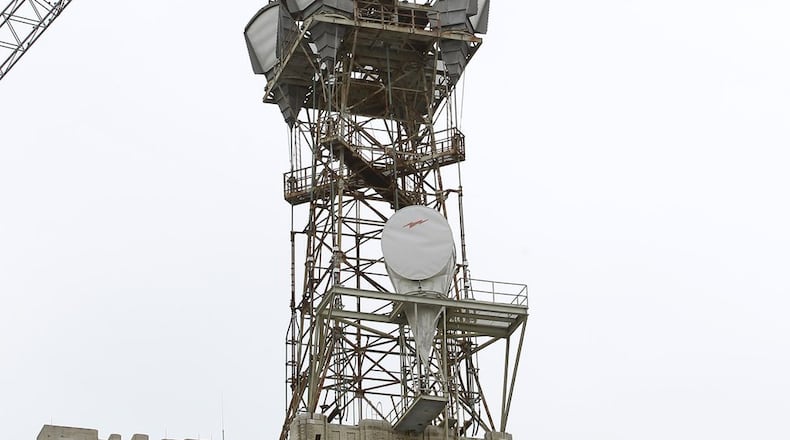AT&T, or Bell System at the time, launched in the late 1940s a $40 million microwave radio-relay skyway, a network of microwave devices designed to transmit telephone and television signals nationwide from Los Angeles to New York City.
IN CASE YOU MISSED OUR HISTORY PIECES
In January 1949, the midwest network of the Bell System, connecting Cleveland and Toledo with Buffalo, Detroit, Chicago, Milwaukee and St Louis, was connected with the eastern network which included Boston, New York, Philadelphia, Washington, D.C. and Richmond, according to Holly Hollingsworth, a spokesman with AT&T.
Hubs in Dayton, Columbus and Cincinnati were connected to the combined network at Toledo in October 1949. The first call on the nationwide system was placed in August 1951 and continued into the 1990s, according to the company,
The microwave relay system was a powerful tool where data was transmitted through the air a long distance without physical wires. But just like visible light, microwaves are blocked by obstacles. They need a clear path to reach their destination and that’s the reason the tower in downtown Dayton stood above most buildings in the city’s skyline.
When developers began building tall buildings in downtown Dayton in the mid 1950s, Ohio Bell expanded its system by constructing the 65-foot tower and added giant microwave transceivers or “ears” to it.
“The additional height on the tower is required to insure uninterrupted reception of channel signals over the proposed 12-story Talbot building and any future additions to downtown buildings,” Fred Harrison of Ohio Bell told the Dayton Daily News in an article published in March 1958.
The cost to construct the tower was $50,000 and was built by Blau Knox C. and the F.X. Minnigan Co., according to the article.
The microwave transceivers, which are nearly the size of half a tractor trailer, and tower were taken down this week and caused the closure of Second Street.
Today, fiber optics that carry large amounts of bandwith and satellites have replaced the need for microwave relay. Most of AT&T’s giant microwave towers across the U.S. have been abandoned as the company sold off most of the network in 1999.
When Bell System built the microwave towers, they were built to last because of their importance to U.S. communication. The microwave towers were used for both civil and government communications.
According to Engineering Radio, the buildings supporting the towers were hardened against a nuclear blast, and the towers themselves were engineered to withstand large blasts within five miles.
About the Author

